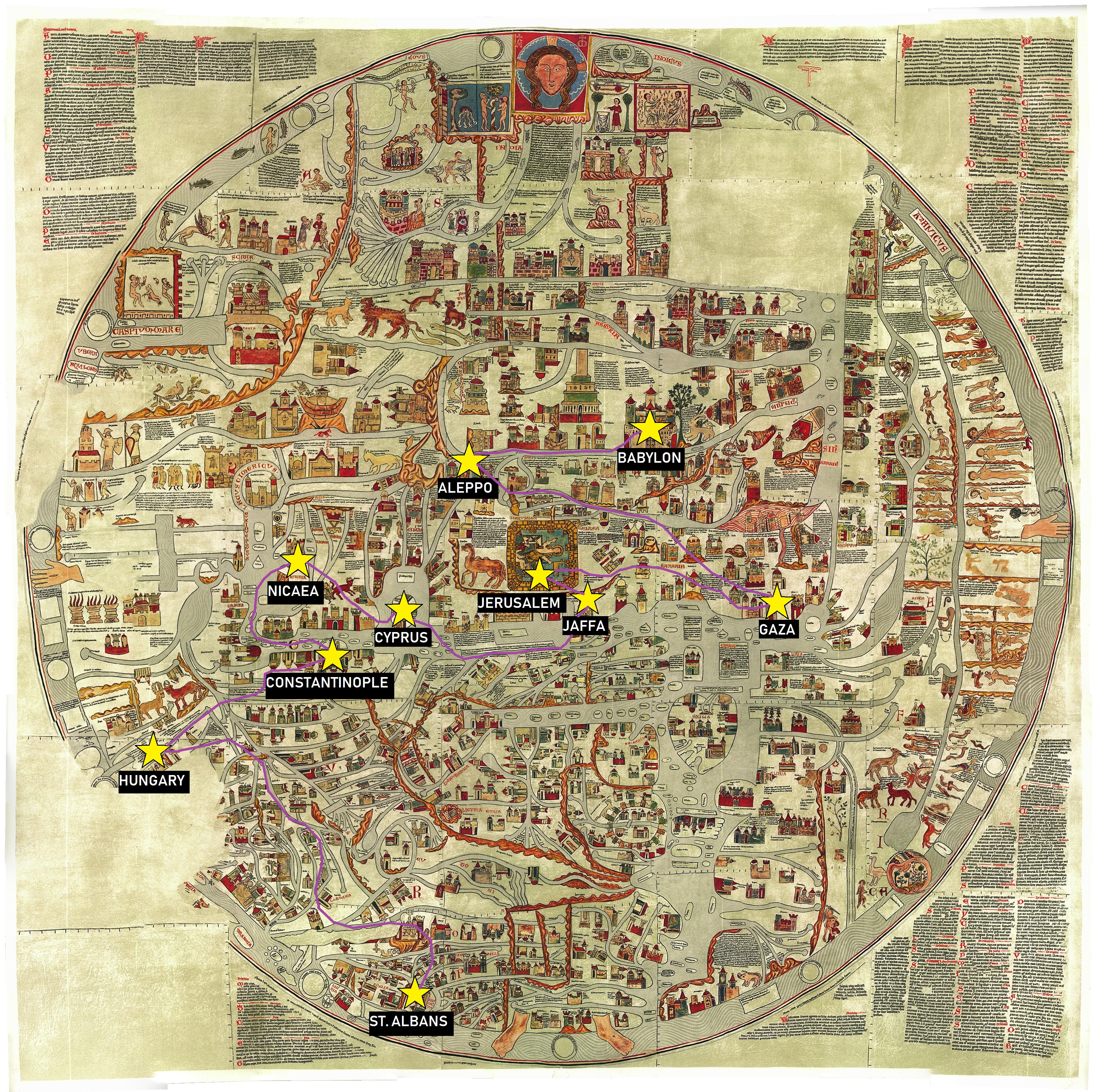Transferring points and routes described in Sir John Mandeville’s Book of Marvels and Travels from a modern map to a medieval map posed unique challenges. Given the difficult-to-discern text on the medieval map and major differences in geographical thinking that went into its creation, locating the points themselves required much greater effort than simply typing names into a search bar on the GIS map viewer. Most location names were impossible to read on the image of the map itself, and medieval geography confused things further, with Hungary being placed northeast of the British Isles.
The two final images ultimately highlight the differences between past and present visualizations of the world. The past visualization in this case refers to that of medieval Western Europe. This worldview differs in obvious geographic ways from the modern map. To begin with, the Ebstorf mappamundi that I used to map my points is oriented with the East facing up and depicts only Europe, Asia, and Northern Africa. In addition, the city of Jerusalem is placed prominently in the center, being one of many symbols on the Ebstorf map that indicate the vital importance of the Christian religion in medieval European conceptions of the physical world. It is interesting that some locations appear closer together on the medieval map than they do on the modern one, while others appear to be similar distances on both. This is true even when one zooms in on the modern map to include only the scope of its medieval counterpart.
Centuries of scientific development went into the modern map I was working with. As a result, its geography is highly accurate and it encompasses much more territory of the physical world than what medieval Europeans knew existed, making the journey I mapped seem smaller in comparison. However, the details on the Ebstorf map communicate much more about how the journey Mandeville describes would have been conceptualized in medieval times. Its illustrations, text inscriptions, and wealth of religious symbols say that this is a journey pertaining to the aims of pilgrimage, and that it covers a significant portion of the known world. The modern map communicates more about the realistic aspects of the routes this journey requires, while the medieval map provides an extensive cultural context to the journey.
